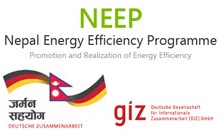Introduction
In industrial type electricity billing system, where mostly a two-part tariff is adopted, the consumer pays for two components of electricity bill namely: maximum demand (kVA) recorded and energy consumed (kWh). Electrical load management for an industry involves measures to reduce maximum demand and to improve power factors so that the maximum demand charges are minimized along with the losses. Energy consumption mainly relates to end-use equipment efficiency and can be reduced by various relevant measures.
Maximum Demand Basis
Maximum demand charges relate to the fixed cost of capacity blocked to be provided for serving a consumer’s needs. A tri-vector meter installed at the consumer end records the maximum demand registered by a consumer during billing duration, apart from other important consumption features like active power (kWh), reactive power (kVarh), apparent power (kVah), and power factor (PF). At present many utilities have a “time of day tariff” in place, and charge a consumer variable rates for maximum demand drawn during different times of day. For instance, there could be lower rates for night hours when the utility is lightly loaded and higher rates during evening peak hours when utilities are stretched to meet maximum load demands. It would thus help to study the load curve patterns and, based on prevalent tariff structure provisions, optimize maximum demand to save on maximum demand charges.
Load curve of a plant
From below figure 1, one can see that demand varies from time to time, due to the combination of users and consumption of electricity changing all the time. The demand is measured over a predetermined time interval and averaged out for the interval as shown by the horizontal dotted line.
Maximum Demand (MD) recording
It is important to note that while maximum demand is recorded, it is not the instantaneous demand drawn, as is often misunderstood, but rather is the time-integrated demand over the duration of the recording cycle. As example, in an industry, if the draw over a recording cycle of 30 minutes is:
- 2500 kVA for 4 minutes
- 3600 kVA for 12 minutes
- 4100 kVA for 6 minutes
- 3800 kVA for 8 minutes
Various techniques applicable to optimize maximum demand of an industry include:
- Rescheduling loads;
- Staggering of motor loads;
- Storage of products/in process material/process utilities like refrigeration;
- Shedding of non-essential loads;
- Operation of captive power generation; and
- Reactive power compensation.
- Rescheduling and Distributing Loads
In figure 3 the left side shows the demand curve of a consumer before load shifting, and the right side shows the demand curve of a consumer after load shifting (leading to kVA reduction).
The electrical load shifting and distributing can help in minimizing the demand shoot that could otherwise happen for a short duration and increase the energy bill to the industry. Some of the examples of load shifting and saving of monetary value to the industry are as follows
- Making up Ice bank during off-peak hours in the dairy industries and optimizing the maximum demand during peak hours.
- Operating bakery section during off-peak hours to optimize the maximum demand during peak hours and also reduce the energy cost in bakery and hotel industries.
- Pumping and storage of water need during the off-peak hours and reduce corresponding demand during peak hours.
- Similarly in the Hydrolysis process of the Oil industry, the storage of hydrogen during the off-peak time can reduce corresponding demand during peak hours and reduce the energy cost.
Power factor improvement
Power factor is defined as the ratio of real power to apparent power. This definition is often mathematically represented as kW/kVA, where the numerator is the active (real) power and the denominator is the apparent power (active+ reactive).
How to improve Power Factor
Power factor can be improved by adding consumers of reactive power in the system like Capacitors or Synchronous Motors. It can also be improved by fully loading induction motors and transformers and also by using higher rpm machines. Usage of automatic tap changing system in transformers can also help to maintain better power factor.
Benefits of Capacitor Bank Installation
- Reduction in voltage drop thereby reduced kVA demand
- Elimination of penalties toward poor power factor
- Improved System Efficiency thereby reduction of electricity bills
- Extended equipment life:- reduced electrical burden on cables and electrical component
- Environmental benefit: - reduction of power consumption due to improved energy efficiency.
- Reduced power consumption means less greenhouse gas emissions.
Example: If maximum demand is 1500 kVA at 0.8 PF, calculate the reduction in demand with improved PF to 0.95, and work out the cost benefits of PF improvement. (Suppose: Per kVA demand charge = NRs 230/kVA, Capacitor Purchase Cost= NRs 1,000 per kVAR)



